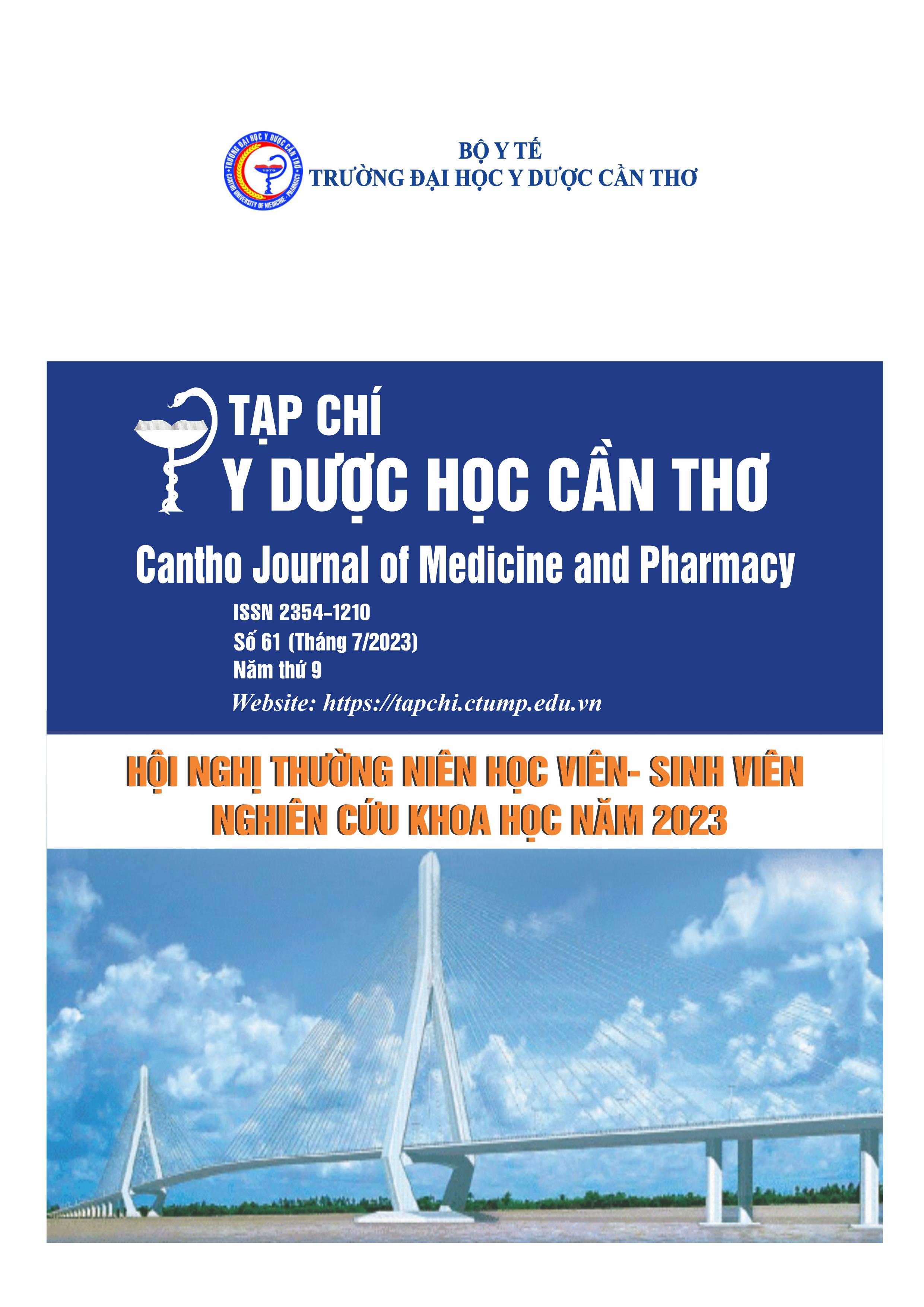VALUE OF ELECTROCARDIOGRAM, WELLS SCORE, D-DIMER IN DIAGNOSIS OF PULMONARY EMBOLISM
Main Article Content
Abstract
Background: Electrocardiogram is one of the preliminary laboratory tests in the diagnostic approach, which can help detect or exclude pulmonary embolism. Objectives: To elevate the value of electrocardiogram and coordinate with Wells score, D-dimer in diagnosing pulmonary embolism. Subjects and methods: A cross-sectional descriptive study on 97 patients with suspected pulmonary embolisms admitted to the Cardiology Department of Can Tho Central General Hospital from January 2020 to December 2021. Results: In our study on 97 patients with suspected pulmonary embolism, 67 (64.9%) patients were diagnosed with pulmonary embolism through computed tomography of the pulmonary artery with contrast. Electrocardiogram factors such as S1Q3, S1Q3T3, and right ventricular hypertrophy were significant in diagnosing pulmonary embolism with p< 0.05. The sensitivity was relatively low, but the specificity was quite high (81.825%-94.455%) in interpreting pulmonary embolism. When analyzing multivariable regression, S1Q3T3 in echocardiogram, Wells score ≥4, and D-dimer cut-off point ≥500 correlated with pulmonary embolism's diagnostic significance. Conclusion: Electrocardiogram had high sensitivity and specificity in diagnosing pulmonary embolism and higher diagnostic value when combined with the Wells score and D-dimer.
Article Details
Keywords
Electrocardiogram, pulmonary embolism, the Wells score and D-dimer
References
2. Amro Qaddoura , Geneviève C Digby , Conrad Kabali et al. The value of electrocardiography in prognosticating clinical deterioration and mortality in acute pulmonary embolism: A systematic review and meta‐analysis. Clinical cardiology. 2017. 40(10), 814-824, doi: 10.1002/clc.22742.
3. Lê Thượng Vũ. Giá trị của điện tâm đồ trong chẩn đoán thuyên tắc phổi. Tạp chí Y học Thành Phố Hồ Chí Minh. 2011. 15, 342-347.
4. Claudia Stöllberger , J Finsterer, W Lutz, C Stöberl, A Kroiss, A Valentin, J Slany. Multivariate analysis-based prediction rule for pulmonary embolism. Thromb Res. 2000. 97(5), 267-73, doi: 10.1016/s0049-3848(99)00180-2.
5. Lê Thượng Vũ. Đặc điểm lâm sàng và cận lâm sàng của 26 trường hợp thuyên tắc phổi chẩn đoán tại bệnh viện Chợ Rẫy. Tạp chí Y học Thành Phố Hồ Chí Minh. 2006. 10(1).
6. Gopikrishna Punukollu , Ramesh M Gowda, Balendu C Vasavada. Role of electrocardiography in identifying right ventricular dysfunction in acute pulmonary embolism. Am J Cardiol. 2005. 96(3), 450-452, doi: 10.1016/j.amjcard.2005.03.099.
7. Rajan T Gupta , Rajesh K Kakarla, Kevin J Kirshenbaum. D-dimers and efficacy of clinical risk estimation algorithms: sensitivity in evaluation of acute pulmonary embolism. American Journal of Roentgenology. 2009. 193(2), 425-430, doi: 10.2214/AJR.08.2186.
8. Nadine S Gibson , Maaike Sohne, Marieke J H A Krui. Further validation and simplification of the Wells clinical decision rule in pulmonary embolism. Thrombosis and haemostasis. 2008. 99(01), 229-234, doi: 10.1160/TH07-05-0321.
9. Andrea Penaloza , Christian Melot, Serge Motte. Comparison of the Wells score with the simplified revised Geneva score for assessing pretest probability of pulmonary embolism. Thrombosis research. 2011. 127(2), 81-84, doi: 10.1016/j.thromres.2010.10.026.
10. Arnaud Perrier , Pierre-Marie Roy, Drahomir Aujesky et al. Diagnosing pulmonary embolism in outpatients with clinical assessment, D-dimer measurement, venous ultrasound, and helical computed tomography: a multicenter management study. The American journal of medicine. 2004. 116(5), 291-299, DOI: 10.1016/j.amjmed.2003.09.041.


